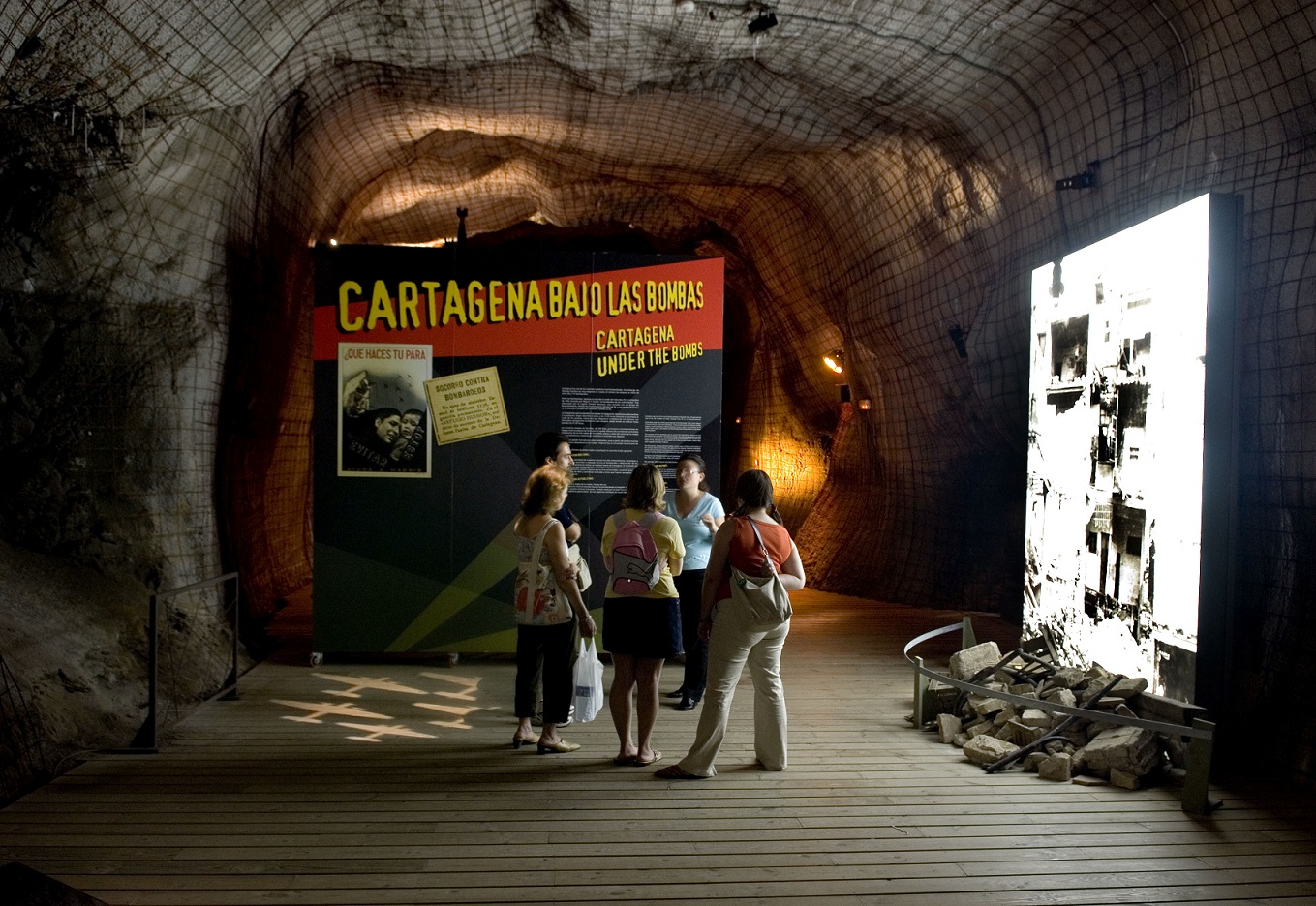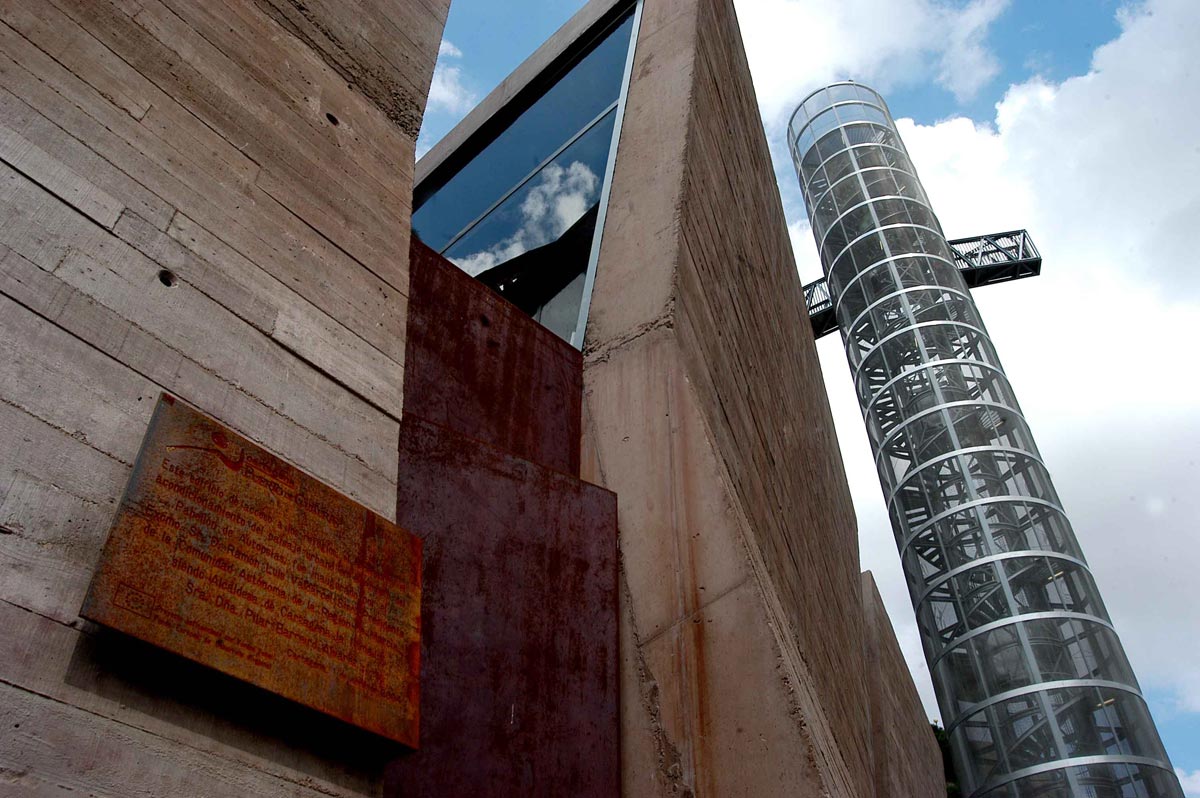01. Civil War Shelter-Museum
These galleries, excavated out of the Cerro de la Concepción to serve as air-raid shelters, were still to be completed at the end of the Spanish Civil War. They were part of the works carried out to construct shelters able to hold 5,500 people during the heavy bombing that Cartagena was subjected to, as it was the naval base for a great part of the Republican fleet.
+ INFO02. Lift-Gangway
Gisbert Street, built across the Cartagena hill, was opened in 1878, thereby connecting Cartagena to the sea. A lift now carries passengers up the 45m elevation, replacing the natural route which was swallowed up with the excavation work.
+ INFO03. Auditorio y Centro de Congresos El Batel
Next to the coastal shelf as one more piece included in the port landscape of commercial containers, links the fisherman area of Santa Lucía to the city centre.
+ INFO04. Héroes de Santiago de Cuba and Cavite Monument
Erected to honour the memory of the Spanish sailors killed at Cavite and Santiago de Cuba while battling against the American fleet. The monument was inaugurated in 1923 by King Alfonso XIII.
05. Regional Assembly
Built in 1987 for its present use, the building has a façade which displays a number of influences: the Venetian Renaissance and a certain modernist air linking it to the typical Levantine architecture. Inside, the most impressive sights are the Patio de los Ayuntamientos (Court of Town Halls) and the Patio de las Comarcas (Court of the Districts).
06. Carmen Conde & Antonio Oliver Museum
Donated to the city of Cartagena by Carmen Conde. The place, has been kept with the same atmosphere, where the local poet wrote most of her important work. It is placed at the Culture Centre Ramon Alfonso Luzzy.





